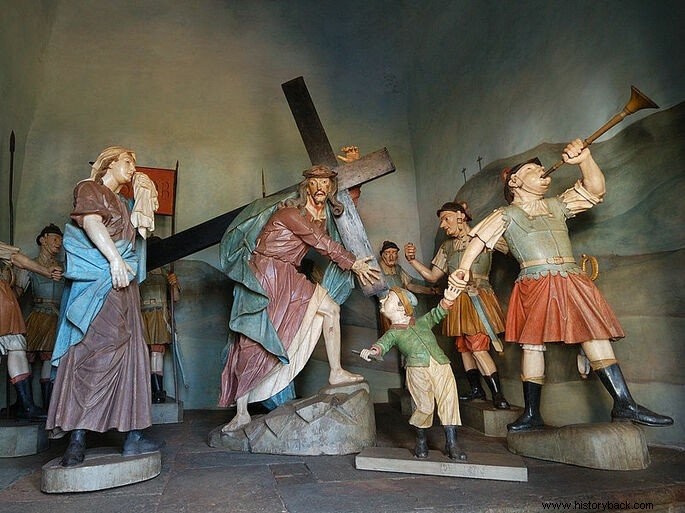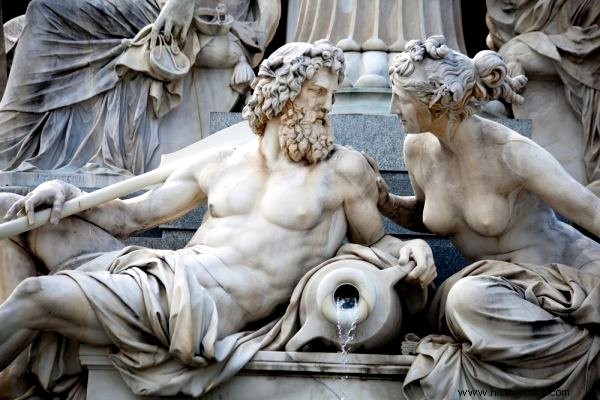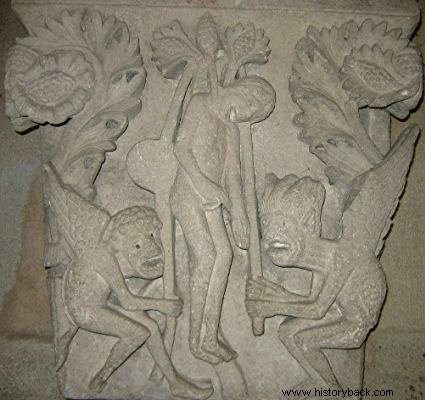The History of Sculpture goes back to the Paleolithic Age, or the Stone Chips, when it originated.
At that time, statuettes of ivory and bones were already made, usually of female figures that presented voluminous shapes, in reference to the rites of fertilization.
In the Mesolithic Age there are almost no sculptures and, in the Neolithic Age, or of the Polished Stone, although they exist in small numbers, there is an improvement in the technique of chipping and polishing the stone.
Sculpture and painting are the first artistic manifestations and, over the centuries, they are related to a series of symbolisms, as we will see below.
Sculpture in Brazil
When talking about Brazilian sculpture, we immediately think of “Aleijadinho”, who stood out with his sacred images and is the greatest representative of the baroque in our country.
Baroque sculpture, influenced by European expression, was elaborate and rich in detail. Before it, however, we cannot fail to mention indigenous art, which, although it did not leave many records, had the function of religious worship and especially portrayed animals.

The first known Brazilian sculptor, however, is Friar Agostinho de Jesus who is believed to be the author of the image of Our Lady of Aparecida that was found by fishermen and gave rise to devotion to the then patron saint of Brazil.
Modernism, in turn, opened space for creativity. At that time, sculpture took on characteristics of abstractionism that were consolidated from the 50's onwards.
Ancient Sculpture
Egyptian Sculpture
Egyptian sculpture was especially concerned with the figure of the Pharaoh, which was believed to house his soul, as it replaced the decomposing body.
Egyptian sculptures are static, with arms outstretched, feet together and free from any facial expression.
Greek Sculpture
The Greeks were inspired by Egyptian art until they exclusively created their own art, which was widely copied - especially by the Romans - due to the prominence achieved with human representation, which was proportionally balanced, perfect and idealistic.
The figures represented did not present true imperfections, thus assuming a divine or sublime character.

While Egyptian sculptures were static, Greek sculptures gained movement. Evolving, they began to show the muscles of the human body and then the slight movement of the arms.
Roman Sculpture
Roman sculpture inherited its perfection from Greek sculpture, but took on a more realistic - rather than idealistic - character of forms.
In addition to their contribution to the original works - considered the most beautiful of antiquity - the Romans copied Greek masterpieces and, fortunately for that, they survive to this day, since the Greek originals have been lost.
One such example can be seen in the Archaeological Museum of Naples; this is the marble sculpture of Orestes and Eletra, made in the 1st century BC
These copies, however, varied according to the skill of the artist who sculpted them. In fact, there was a specific school for copying Greek sculpture.
When Roman sculpture began to seek new forms of expression, it moved away from its Greek roots. Thus, from the 1st century onwards, artists achieved a more realistic character through the technique of light and shadow.

It is in the area of face sculpture that Roman sculpture stands out. It is believed to have developed in the tradition of the busts of the deceased that realistically portrayed the imperfection as well as the aging marks of the deceased.
However, the “portrait” of elite people continued to be idealized:men were portrayed with their youth and women with beautiful hairstyles; Emperors were idealized in an attempt to bring them closer to the divine.
With the end of the Roman Empire, art begins to show the influence of oriental art.
Also read:Types of Art
